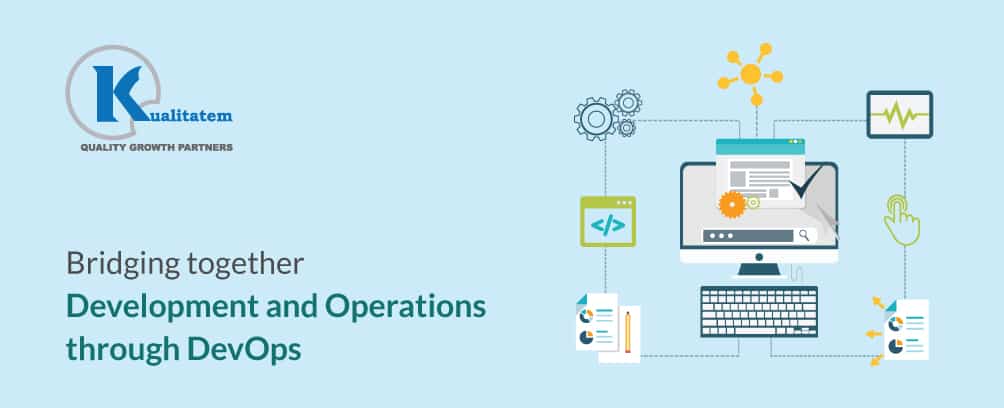Bridging Together Development And Operations Through DevOps

All the latest testing solutions that you’d see gaining popularity have been built upon the state-of-the-art high-tech approach that is both productive and challenging. Among these, DevOps is an easy collaborative technology trend but somewhat burdensome to execute.
From the previous year, Development and Operations together have changed the testing patterns to tremendous level.
According to the Annual State of Testing Report 2017, only 26% IT respondents used DevOps worldwide in the last year. It is just a slight difference of 3% from 2016. Where’s the gap? Where are these particular departments lacking? Well, this is what we are going to discuss on this blog for you.
Bridging together Development and Operations is a bit challenging particularly when it’s about breaking the old habits and bringing everyone to the same table. It is quite a tough job to harmonize the team members that have unique mindsets and ideas.
What’s the Actual Conflict Between Dev and Ops?
There is no question about the benefits of Dev and Ops if combined together. Their collaboration can catalyze a business’s growth, reduce the time and budget fatigue, and of course, build a firm reputation of a company.
But, both domains have different key metrics, goals, and objectives of a project respectively. Merging these key metrics is a serious dilemma.
Development focuses on developing new algorithms and systems to engage and satiate its users. While Operations is like another side of the mirror that emphasis on creating an error-free product. There is a considerable difference between the jobs of the two mentioned departments.
Nevertheless, DevOps is training tech teams on how to collaborate and stick together by sharing and understanding as well as administering different ideas from different stakeholders. While majorly, DevOps focuses on reaping business level advantages for the stakeholders.
Let’s Bridge Development and Operations Together
To help you align the two teams to work together, we have listed some ways that can conveniently induce the Development and Operations departments to bridge together via DevOps:
- Time to Abandon the Old Practices
DevOps demands to move from theoretical to more rational patterns. The well-disciplined technology inspires you to critically think about how to stop a bug from inflicting issues, in spite of focusing on the number of bugs in a software. Find ways, get out of the dark old tunnel and introduce yourself to the very new and resourceful technique, DevOps.
- Becoming Flexible —The only choice left
Adopting DevOps is like coming out of your comfort zone for the sake of learning new technicalities, skills, and tools, and creating a new comfort zone for yourself. Learnability and becoming extremely adaptive is the topmost key to successful DevOps execution.
- Can There Be Two Leaders? Not in DevOps
There should be a single project manager for the whole DevOps team that manages and instructs the new techniques to the team. A Project Manager that focuses on the latest trends and has the guts to envision success with its team is the one to be called a ‘leader’.
- Let in Some Microservices
Transforming from vintage architectural styles to Microservices architectural patterns can be cumbersome when adopting DevOps. It is not tough, however, the DevOps team just has to pre-decide some most beneficial application highlights, define some architectural principles and boundaries, and create a pro software development strategy while staying on one tab.
- Choose Tools and Get Trained
These are two important aspects that vastly influence ways that make adoption of DevOps successful. Because, DevOps is totally linked to Automation basically, it is crucial that every new adopter switches from legacy tools to latest testing tools that actually help in building up Dev and Ops together. Because it is waste of time if the tools you use do not supply proper services to release cycles, continuous Integration, continuous product delivery, and fast code checking.
Besides, buying or downloading these tools is not the only part of learning the course, but getting trained to it is also essential.
- You Won’t Miss Out on Anything
Who would know it better than IT professionals that missing out a call, a meeting or an email can become too ferocious and irritating? Well, co-location is a perfect reliance to keep every development and Operations person up to date.
These points are super helpful in filling up the gap between Development and Operations departments.
So, join the DevOps league and become a part of the alpha future.











